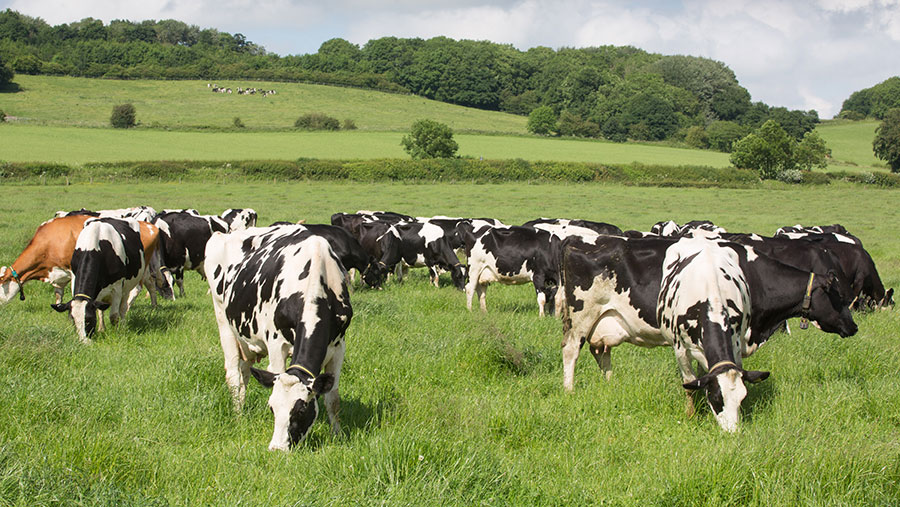Welsh farmers call for bovine TB action as 10k cattle killed
 © Tim Scrivener
© Tim Scrivener Farm leaders are demanding further action from the Welsh government to tackle bovine TB in Wales, including addressing the reservoir of disease in wildlife.
Last month, Wales’ first minister Mark Drakeford sparked fury when he blamed farmers for a rise in bovine TB rates.
Mr Drakeford told the Senedd that the “single biggest reason” for a rise in TB levels in areas of the country with low disease risk was farmers “buying infected cattle and bringing them into the area”.
See also: Q&A: Wales’ chief vet outlines latest bovine TB strategy
Dairy farmer Abi Reader manages 180 Holstein Friesian and Dairy Shorthorns in Glamorganshire, south Wales. Since March 2019, she lost 42 cows because of TB and her herd is currently under movement restrictions.
Ms Reader said: “I was accredited TB-free for nine years, and suddenly I am down with TB and have gone into enhanced testing. I cannot quite believe how I have got here from such a low area.
“There is a big wildlife problem, especially in west Wales. The Welsh government needs to be a little bit bolder and have a go at a badger population cull like they have done in England.
“The testing is also not good enough. We are all suffering and that would include members of the government. They are not doing enough really.”
10,000 cattle condemned
The latest official bovine TB statistics (PDF) show that 10,258 cattle were slaughtered because of TB in the year to 2021, compared with 1,348 in the year 2000.
Organic dairy farmers Dai, Sharon and Llŷr Miles, who farm at Beudy Bach, Haverfordwest, Pembrokeshire, said their farm recently went down with TB for the first time in three years after a first-calving heifer tested positive.
“Not enough is being done. I understand we have to control TB and the reactors do need to be slaughtered, but it’s not just cows with TB. There is nothing being done to address the problem in the wildlife reservoir,” said Llŷr.
“Let’s not forget that countries such as France and Germany are able to maintain bovine TB incidence levels close to zero, and the Republic of Ireland has been able to halve TB incidents through proactive badger culling.”
In 2012, the Welsh government replaced plans to cull badgers in north Pembrokeshire with a five-year badger vaccination programme which, as predicted by the Welsh government’s own evidence, has led to no statistically significant fall in cattle herd incidents.
Both NFU Cymru and the Farmers’ Union of Wales said the ongoing bovine TB crisis continues to place enormous emotional and financial strain on farming families. NFU Cyrmu said cattle moved into low TB risk areas will have passed stringent protocols and a farmer would never knowingly import infected cattle into the area.
Wildlife reservoir
A spokesman for NFU Cymru said: “TB is a complex disease, and farmers are playing their part in bearing down on it through cattle-based measures. However, wildlife reservoirs of disease are still going unaddressed, and we need comprehensive measures to be put in place if we are to ensure the continuing downward trend in incidence.”
In areas of Wales where the disease is not endemic in the cattle or wildlife populations, such as north-west Wales, NFU Cymru believes that cattle testing and control measures are vital to prevent the disease spreading.
But in some parts of Wales, where government surveys have shown about one in five badgers are suffering from TB, the union maintains that culling is needed to lower populations.
NFU Cymru president John Davies has written to the first minister to request a meeting to discuss bovine TB and how to move forward in Wales with a strategy to eradicate the disease.
A Welsh government spokesperson said: “We have outlined in our Programme for Government that we will not permit the culling of badgers as part of measures to deal with bovine TB.
“Recent scientific studies did not provide conclusive evidence that culling badgers alone would reduce incidence levels in cattle herds.
“It has been proven that more infection is transmitted within species than between species, which suggests that controlling transmission among cattle is a priority in the strategy for eliminating TB.”
